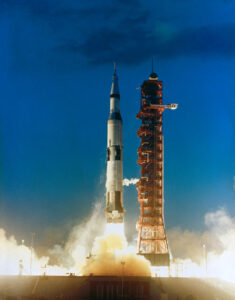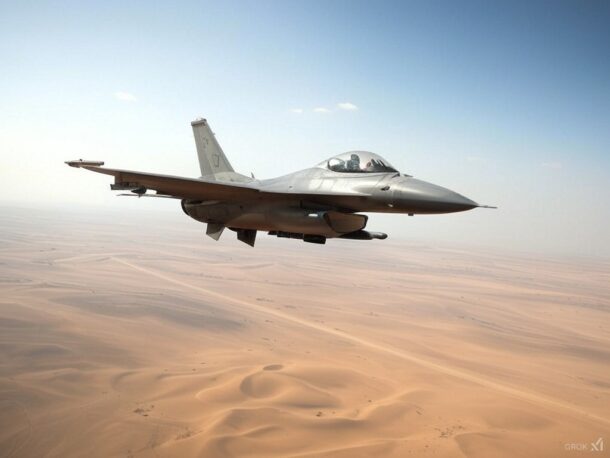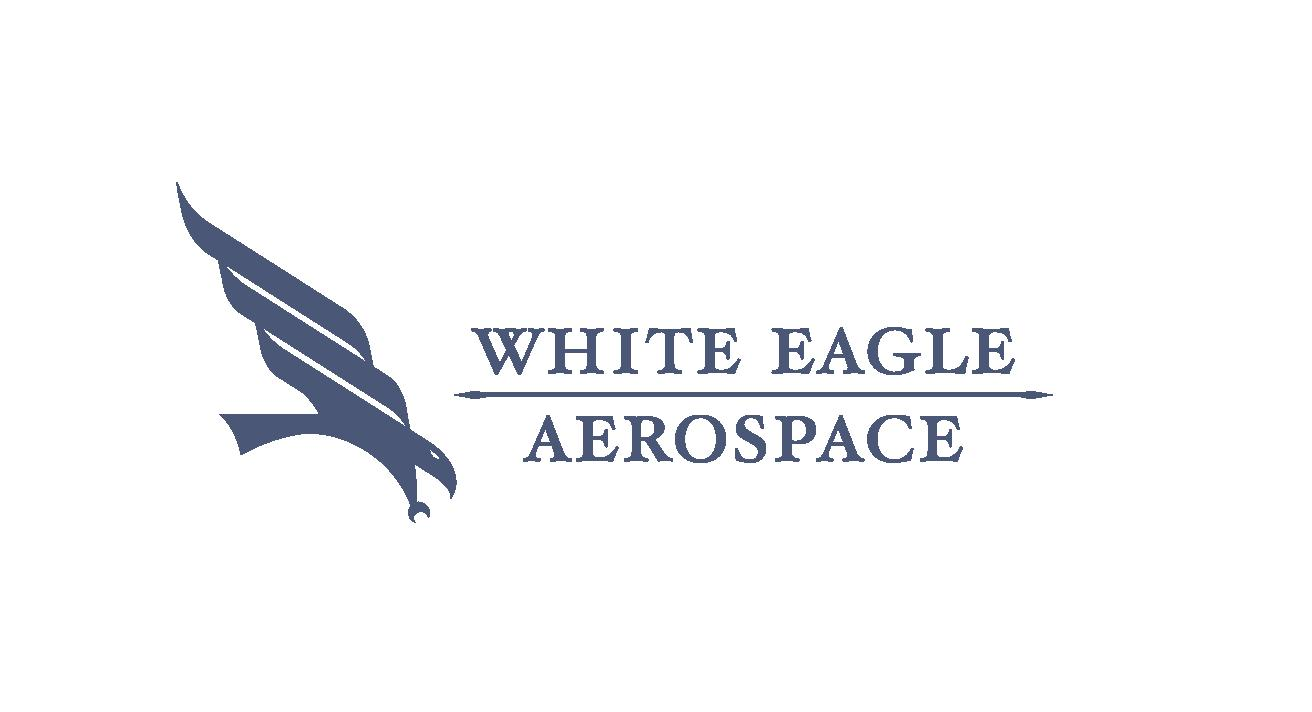Today in Aerospace History: Celebrating the Apollo 5 Mission
🚀 January 22, 1968—a pivotal moment in aerospace history.
 On this day, NASA launched Apollo 5, the first mission to test the Lunar Module (LM) in space. Designed to operate solely in the vacuum of space, the LM was a groundbreaking innovation and an essential component of the Apollo program’s ultimate goal: landing humans on the Moon.
On this day, NASA launched Apollo 5, the first mission to test the Lunar Module (LM) in space. Designed to operate solely in the vacuum of space, the LM was a groundbreaking innovation and an essential component of the Apollo program’s ultimate goal: landing humans on the Moon.
The Apollo 5 mission marked a critical milestone for NASA and the broader aerospace community, as it validated key systems that would later enable the historic Apollo 11 Moon landing in July 1969. Although the mission faced its share of technical challenges, its success underscored the resilience, ingenuity, and teamwork of the engineers and scientists behind the program.
The Mission: A Test of Lunar Module Capabilities
Apollo 5’s primary objective was to evaluate the performance of the Lunar Module in the harsh environment of space. Unlike the Command and Service Module, which was designed for both space travel and re-entry, the LM was built solely for operation in the vacuum of space and was equipped with two key propulsion systems:
- The Descent Engine: Designed to gently lower the LM to the lunar surface.
- The Ascent Engine: Engineered to propel the LM back into lunar orbit after the astronauts completed their mission on the Moon.
Launched aboard a Saturn IB rocket from Cape Kennedy’s Launch Complex 37B, Apollo 5 carried the LM into Earth orbit for its first unmanned test flight. Engineers conducted a series of maneuvers to simulate the conditions the LM would face during an actual lunar mission, including engine firings and abort scenarios.
Challenges and Triumphs
Despite encountering a malfunction with the descent engine—which failed to achieve its full thrust during some test scenarios—the mission was deemed a success. NASA engineers demonstrated rem
arkable adaptability by using the available data to validate the LM’s design and make critical adjustments for future missions.
This ability to adapt under pressure highlighted the importance of rigorous testing and contingency planning, principles that remain foundational in aerospace engineering today.
Legacy of Apollo 5
Apollo 5 laid the groundwork for subsequent manned missions by proving the Lunar Module’s capabilities. Without this critical test, the success of Apollo 11 just 18 months later might not have been possible. The mission is a powerful reminder of how meticulous planning, rigorous testing, and collaborative problem-solving drive innovation and achievement in aerospace.
Lessons for Today’s Aerospace Engineers
The story of Apollo 5 offers timeless lessons for modern aerospace professionals, whether you’re working on advanced aerodynamics, missile systems, or hypersonics. Key takeaways include:
- Test Rigorously: Leave no stone unturned in validating your designs.
- Adapt to Challenges: Embrace obstacles as opportunities for innovation.
- Collaborate Effectively: Harness the power of teamwork to achieve groundbreaking results.
Honoring the Past, Inspiring the Future
As we honor the achievements of Apollo 5, let’s remember: the sky isn’t the limit—it’s just the beginning. By drawing inspiration from the Apollo program and applying its lessons to our work today, we can continue to push the boundaries of possibility and shape the future of aerospace innovation.
Posted on January 17, 2025 by
Admin
On January 17, 1993, an F-16 achieved a historic aerial victory, shooting down an Iraqi MiG-23 during Operation Provide Comfort II. This milestone highlighted the precision of U.S. air combat operations and showcased the capability of the AIM-120 AMRAAM. It was a defining moment in modern military aviation, demonstrating the importance of air superiority in maintaining global peace and stability.
The Context: Operation Provide Comfort II
After the Gulf War in 1991, the United Nations established no-fly zones over northern and southern Iraq to protect vulnerable populations. Operation Provide Comfort II tasked coalition forces with enforcing these zones, requiring constant vigilance and precision. The stakes were high, and violations could escalate into serious threats.
The F-16 MiG-23 Shootdown
The aerial engagement began when an Iraqi MiG-23 violated the northern no-fly zone. U.S. Air Force Lieutenant Colonel Gary North, piloting an F-16C Fighting Falcon, intercepted the aircraft after multiple warnings went unheeded. Following strict rules of engagement, North fired an AIM-120 AMRAAM, successfully neutralizing the MiG-23. This marked the second confirmed kill using the AIM-120 AMRAAM, further demonstrating its effectiveness in combat.
Tactical Milestone: The Role of the AIM-120 AMRAAM
The AIM-120 AMRAAM had already proven itself with its first combat kill weeks earlier. Its successful deployment in this engagement solidified its reputation as a game-changer in modern air combat, offering precision and reliability. For U.S. pilots, the missile became an invaluable asset in enforcing airspace control.
The Legacy of January 17, 1993
This event underscored the critical role of training, discipline, and advanced technology in maintaining air superiority. It also highlighted the geopolitical importance of enforcing international mandates, ensuring that coalition forces could operate with confidence and effectiveness.
Learn More
Discover more about the history of the F-16, the AIM-120 AMRAAM, and their impact on modern military aviation by exploring our related articles:
- The Evolution of the F-16 Fighting Falcon: Explore how the advancements in fighter design, like those seen in the YF-23 prototype, were influenced by and contrasted with the operational successes of the F-16. This perspective highlights how innovation shaped the evolution of air combat capabilities.
- Basic Missile Aerodynamics: Dive deeper into the principles of missile design and performance. This course provides valuable insights into how air-to-air missiles like the AIM-120 AMRAAM are constructed and optimized for precision, reliability, and effectiveness in combat scenarios.
For more details about Operation Provide Comfort II, visit authoritative sources such as the U.S. Air Force Historical Support Division or Raytheon Missiles & Defense.
Soaring Through Time: The Historic Apollo 11 Mission

SEO Meta-Description: Explore the captivating history of the Apollo 11 mission, the groundbreaking event that landed humans on the moon for the first time. Discover key moments, challenges, and triumphs of this iconic aerospace achievement.
When one thinks about historic moments in aerospace history, the Apollo 11 mission stands out as a monumental achievement. It was a time when the impossible became possible, thanks to the relentless pursuit of knowledge and exploration. Let’s dive into the details of this captivating journey that forever changed humanity’s relationship with the cosmos.
The History Behind Apollo 11
In the wake of the Cold War and the fierce competition of the Space Race, the United States set its sights on a bold new frontier: the moon. It was President John F. Kennedy who, in 1961, threw down the gauntlet with his famous speech, declaring that America would land a man on the moon before the decade was out. This audacious goal set the stage for one of the most remarkable achievements in human history.
The Road to Apollo 11
- NASA’s Formation: Before Apollo 11 could take flight, NASA had to be established. Formed in 1958, NASA became the epicenter of America’s space exploration efforts.
- Project Mercury and Gemini: Prior to Apollo, these programs were essential in developing the technology and skills necessary for lunar exploration.
- Apollo Program Initiation: Launched in 1961, the Apollo program aimed to fulfill Kennedy’s ambitious vision, culminating in the first manned moon landing.
The Apollo 11 Mission
On July 16, 1969, the world watched in awe as the Saturn V rocket roared to life, launching Apollo 11 into the heavens. Aboard were three brave astronauts: Neil Armstrong, Edwin “Buzz” Aldrin, and Michael Collins. Their mission? To accomplish what no human had done before—set foot on the lunar surface.
- Launch and Journey: The Saturn V, a marvel of engineering, carried the crew safely into space, setting them on a trajectory toward the moon.
- Lunar Orbit and Landing: On July 20, 1969, history was made. Armstrong and Aldrin descended in the lunar module, Eagle, while Collins remained in orbit. As Armstrong stepped onto the moon, his words echoed through history: “That’s one small step for man, one giant leap for mankind.
- Exploration and Experiments: The astronauts spent over 21 hours on the lunar surface, conducting experiments, collecting samples, and capturing iconic photographs.
- Return to Earth: After their successful mission, the crew safely splashed down in the Pacific Ocean on July 24, 1969, greeted as heroes.
The Impact of Apollo 11
The Apollo 11 mission wasn’t just about reaching the moon; it was a testament to human ingenuity, perseverance, and the spirit of exploration. Its impact resonated far beyond the scientific community, influencing culture, politics, and inspiring generations.
Cultural and Scientific Advancements
- Technological Innovation: The mission spurred advancements in computer technology, materials science, and telecommunications, with many innovations finding their way into everyday life.
- Global Unity: The achievement was a unifying moment for humanity, showcasing what could be accomplished through cooperation and shared goals.
- Scientific Knowledge: Apollo 11 significantly advanced our understanding of the moon and space, providing invaluable data that continues to inform research today.
The history of the Apollo 11 mission is a beacon of human achievement, a story of courage, innovation, and the relentless pursuit of dreams. As we look back on this pivotal moment in aerospace history, we are reminded of the limitless possibilities that await when we dare to reach for the stars. Apollo 11 not only fulfilled a national goal but also inspired a global audience, proving that when humanity unites in pursuit of knowledge, the sky is not the limit—it’s just the beginning.
 On this day, NASA launched Apollo 5, the first mission to test the Lunar Module (LM) in space. Designed to operate solely in the vacuum of space, the LM was a groundbreaking innovation and an essential component of the Apollo program’s ultimate goal: landing humans on the Moon.
On this day, NASA launched Apollo 5, the first mission to test the Lunar Module (LM) in space. Designed to operate solely in the vacuum of space, the LM was a groundbreaking innovation and an essential component of the Apollo program’s ultimate goal: landing humans on the Moon.


